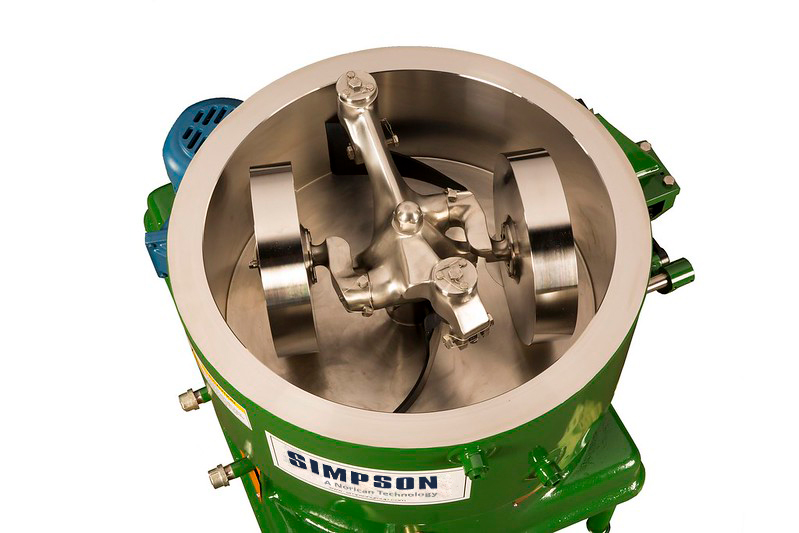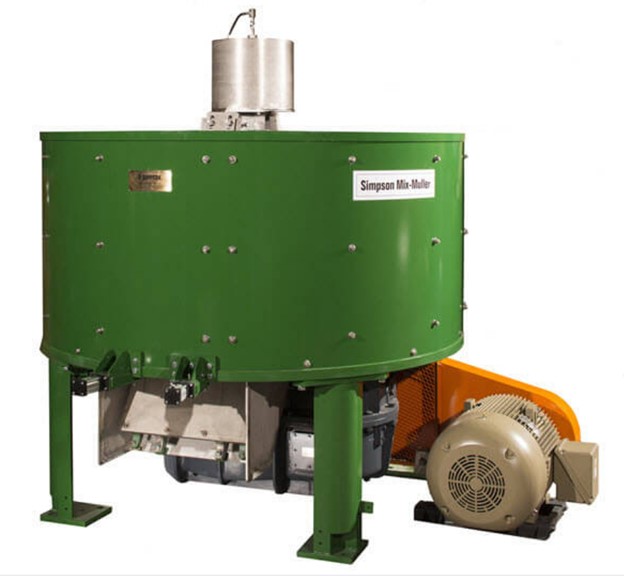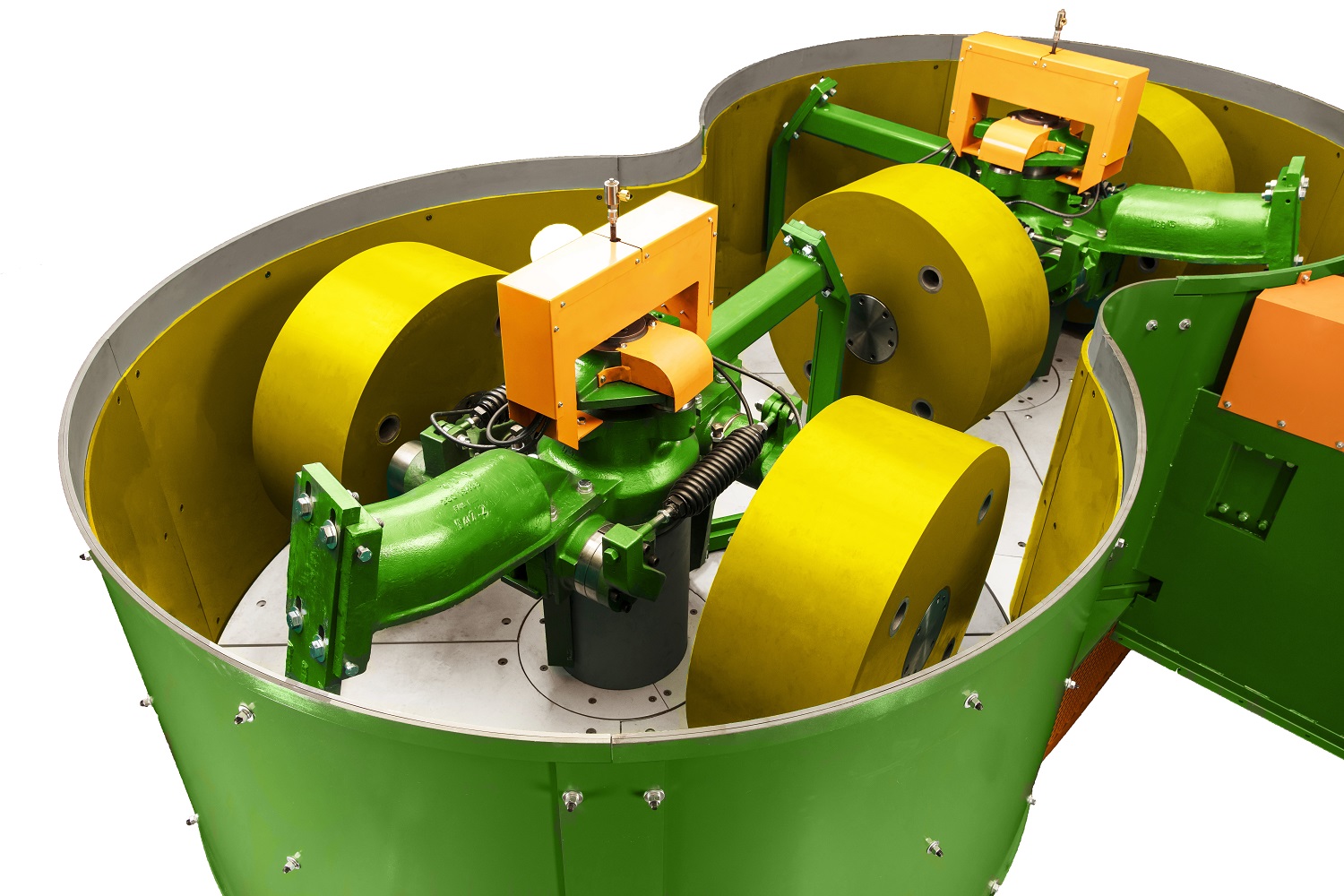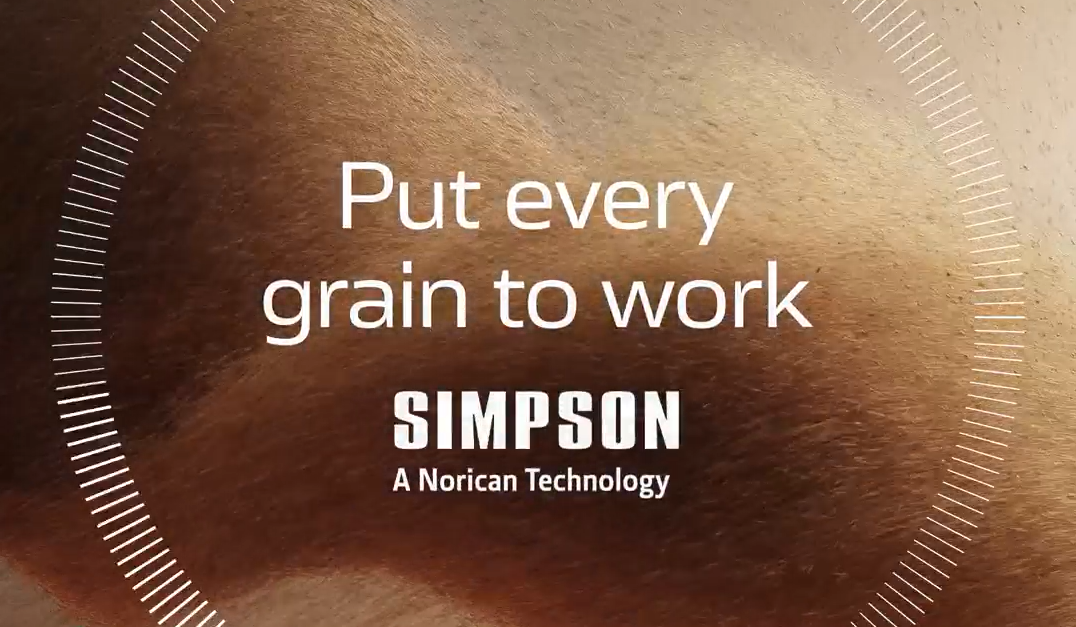Versatility and Customized Solutions
Process Industry
While conventional mixing is usually adequate for the blending of easy-to-handle solids, only more intensive forms of mixing can produce total uniformity in a mix of materials having disproportionate mass, particle size, liquidity, viscosity or density. Simpson is here to assist you in reviewing wetted solids mulling options.
Over the last 110 years, Simpson has developed advancements and customizations for the process industries by closely working with research-based organizations and clients. Simpson equipment provides strong repeatability, process control, advanced energy efficiency and safety.
Let’s Build the Right Solution for Your Foundry

- Animal Feeds
- Architectural Stone
- Batteries
- Catalysts
- Ceramics/Pottery
- Charcoal
- Colored Pigments
- Explosives/Pyrotechnics
- Fertilizer
- Graphite Products
- Metallurgical Products
- Molecular Sieves
- Pharmaceuticals
- Refractories
- Welding Rod Coating
Mixing vs Mulling
A concise definition of mulling would read “an intensive and controlled mixing process.” Mulling action is a combination of controlled pressure and agitation, to achieve a high degree of uniformity in the preparation of two or more dry/solid or wetted/solid materials rather than agitation alone.
Mixing
A mixer for combining solid materials usually operates with a stirring or beating action effected by blades, paddles, arms, or flighting. The normal action of this type of mixer though adequate for simple blending tasks, is not suitable where tempering action, strict uniformity or the intimate blending of a relatively small amount of material into a large mass, is desirable.
Mulling
The muller is used where materials of disproportionate mass, density, viscosity or particle size must be evenly dispersed to form a homogenous mass… without segregation/or where a small amount of one or more materials must coats each grain of a larger mass.



